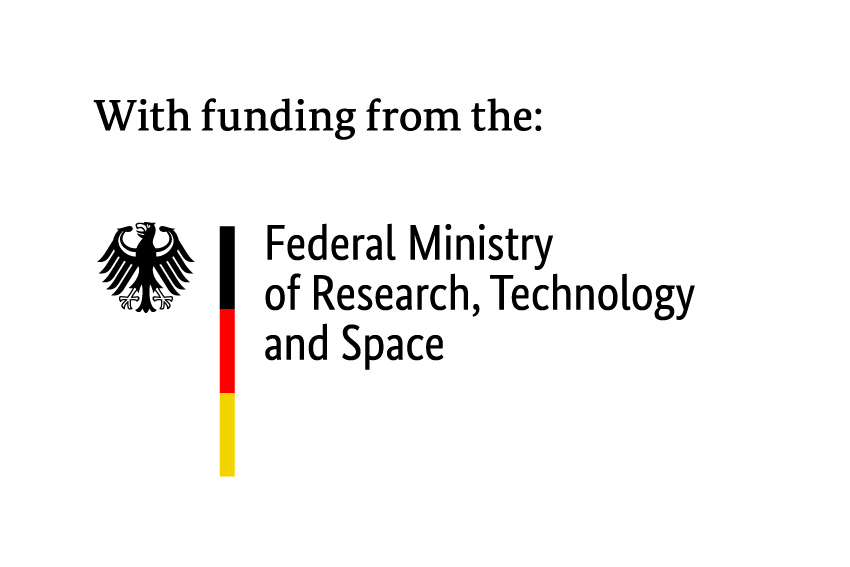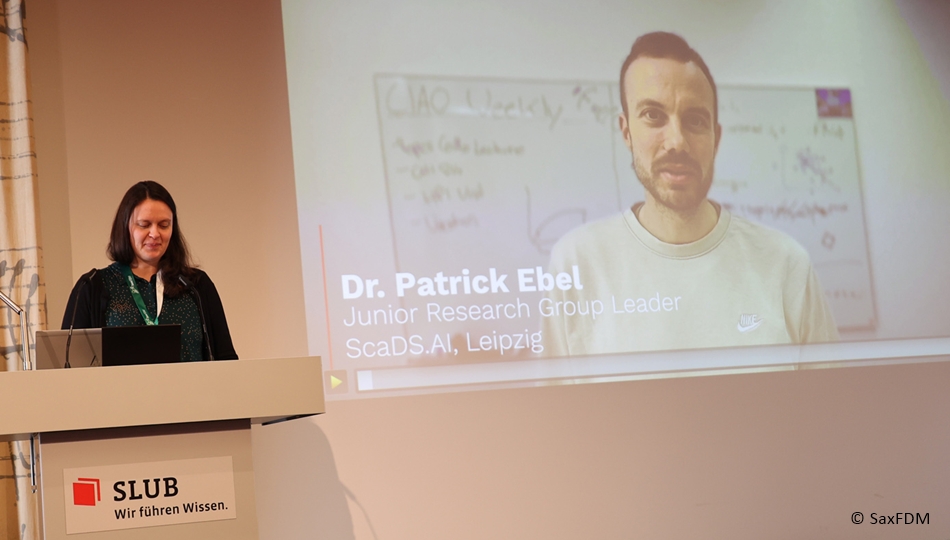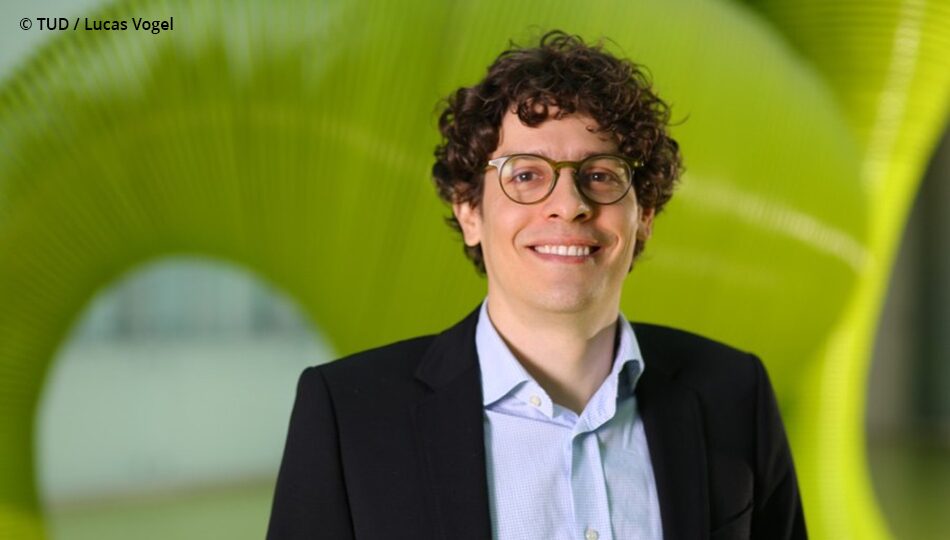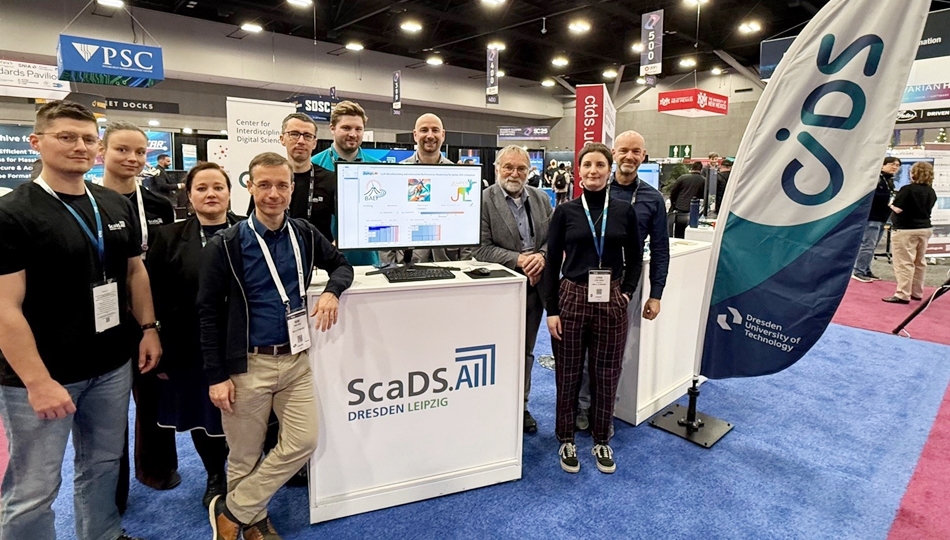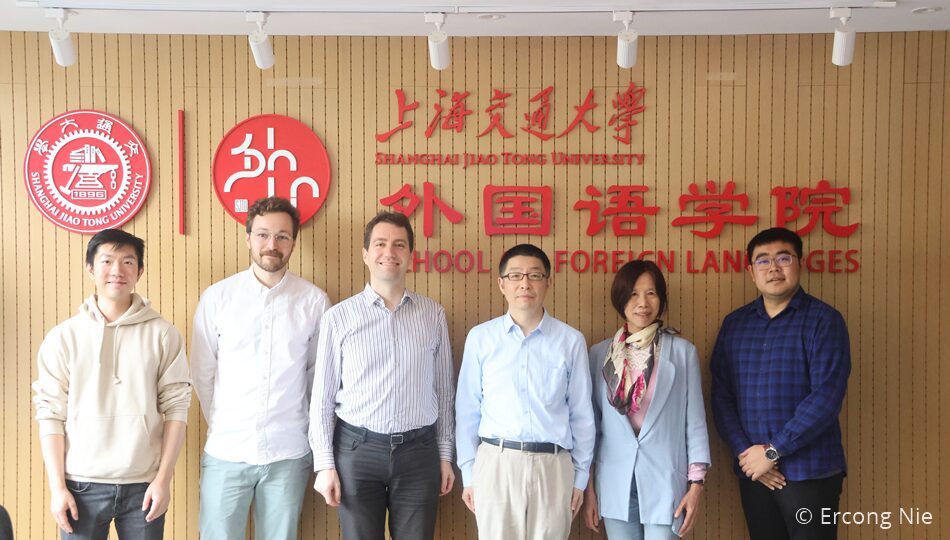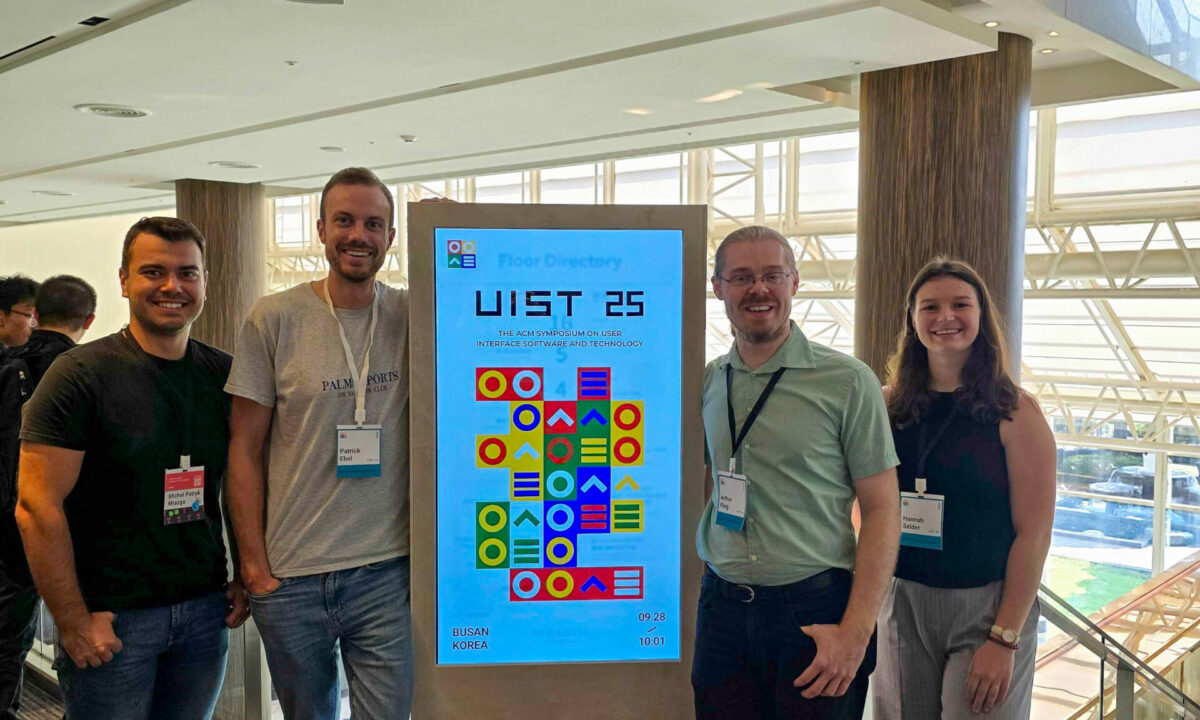
October 14, 2025
ScaDS.AI goes South Korea: Advancing simulated users at the UIST 25 Conference

From September 28 to October 1, the UIST 2025 Conference took place in Busan, South Korea. The ScaDS.AI Dresden/Leipzig researchers Dr. Arthur Fleig, Hannah Selder, Dr. Patrick Ebel, and Michal Miazga made the trip and presented their research.
The Symposium on User Interface Software and Technology (UIST) is one of the leading international conferences for advancements in human-computer interaction. It has a very low acceptance rate of 22.2% for the paper track and 29.4% for the workshop track and 44% for the poster track, which honors the ScaDS.AI members in their particularly good work. Sponsors are the ACM’s special interest groups on computer-human interaction (SIGCHI) and computer graphics (SIGGRAPH). Researchers and practitioners from a wide variety of fields gather there. This includes:
- graphical & web user interfaces
- tangible & ubiquitous computing
- virtual & augmented reality
- multimedia
- new input & output devices
- Human-Centered AI
- Computer Supported Cooperative Work
With its focused scale and intensive program, UIST offers an excellent platform for exchanging cutting-edge research and new ideas.
Contributions from ScaDS.AI
Reinforcement Learning to Human-Computer Interaction:
Hannah Selder, PhD student at ScaDS.AI Dresden/Leipzig presented the paper “Demystifying Reward Design in Reinforcement Learning for Upper Extremity Interaction: Practical Guidelines for Biomechanical Simulations in HCI“.
Building on her CHI 2025 Late-Breaking Work, this paper addresses one of the biggest challenges in applying reinforcement learning to simulate user movement with biomechanical models in human-computer interaction: the extensive and often unintuitive trial-and-error involved in designing effective reward functions.
Together with Arthur Fleig (ScaDS.AI Dresden/Leipzig), Florian Fischer and Per Ola Kristensson (both Cambridge University), Hannah Selder introduces a principled reward function structure, presents the first systematic and empirical analysis of its components, and provides practical guidelines for reward design. Combined, these contributions lower the entry barrier for newcomers, minimize frustration of researchers without deep expertise in reinforcement learning, and reduce computational costs. They also give experienced researchers a solid foundation for building and analyzing biomechanical simulations of interaction.
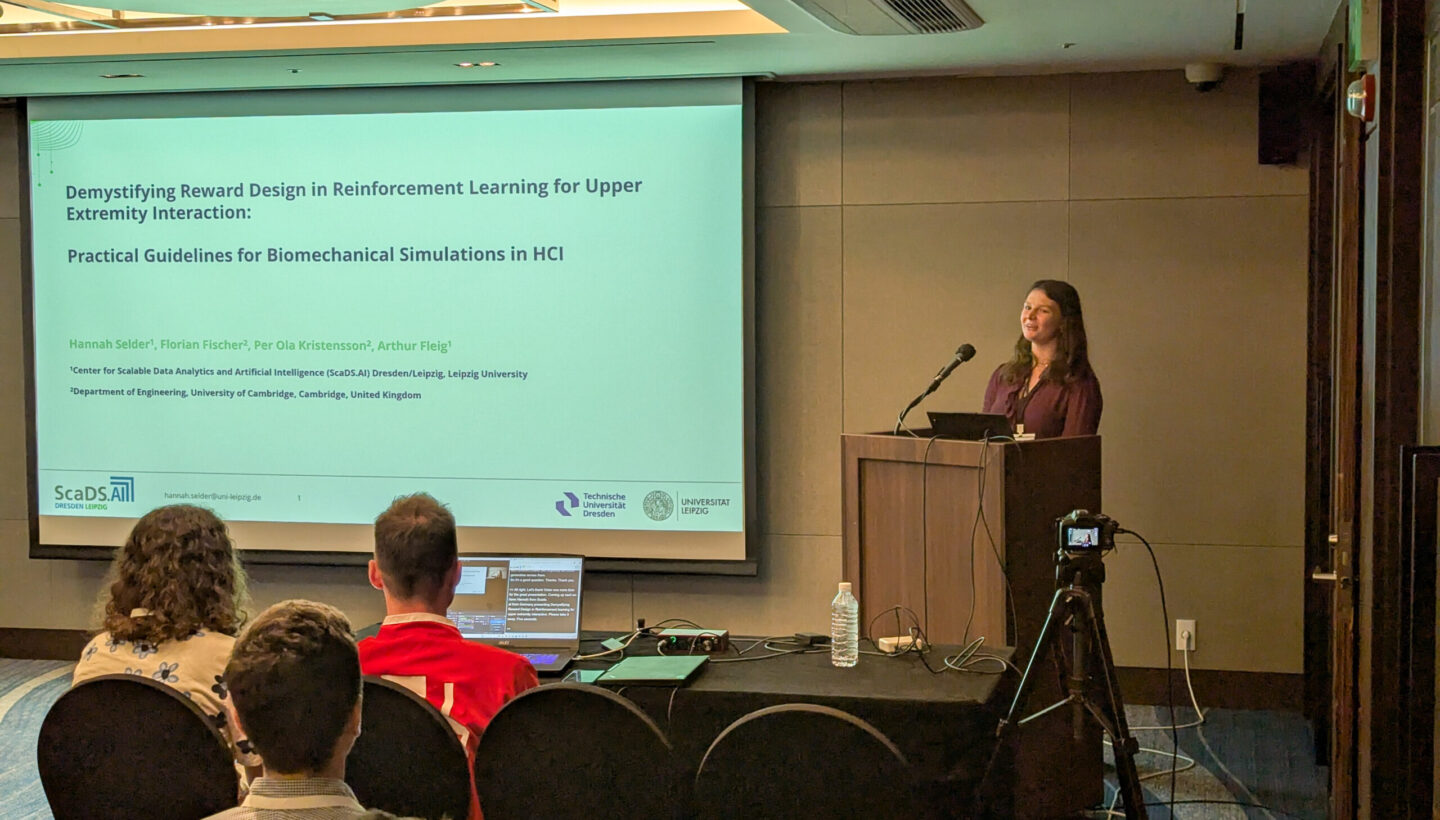
Here is the Dataset including final training checkpoints of reinforcement learning agents trained with distinct reward functions across four interaction tasks.
Training Routines for RL-Driven Biomechanical Models in HCI
Michal Miazga (ScaDS.AI Dresden/Leipzig) presented his and Patrick Ebel’s poster with the title: “Increasing Interaction Fidelity: Training Routines for Biomechanical Models in HCI“. Michal developed training routines for RL-controlled biomechanical models, which is his first work as a doctoral student. Training routines are proposed to facilitate the simulation of user movements. In addition, the multi-stage curriculum approach reduces training time and increases interaction fidelity, making biomechanical models relevant to mobile interactions. He and Patrick Ebel work together at the Junior Research Group CIAO , which is part of the research area Applied AI and Big Data.
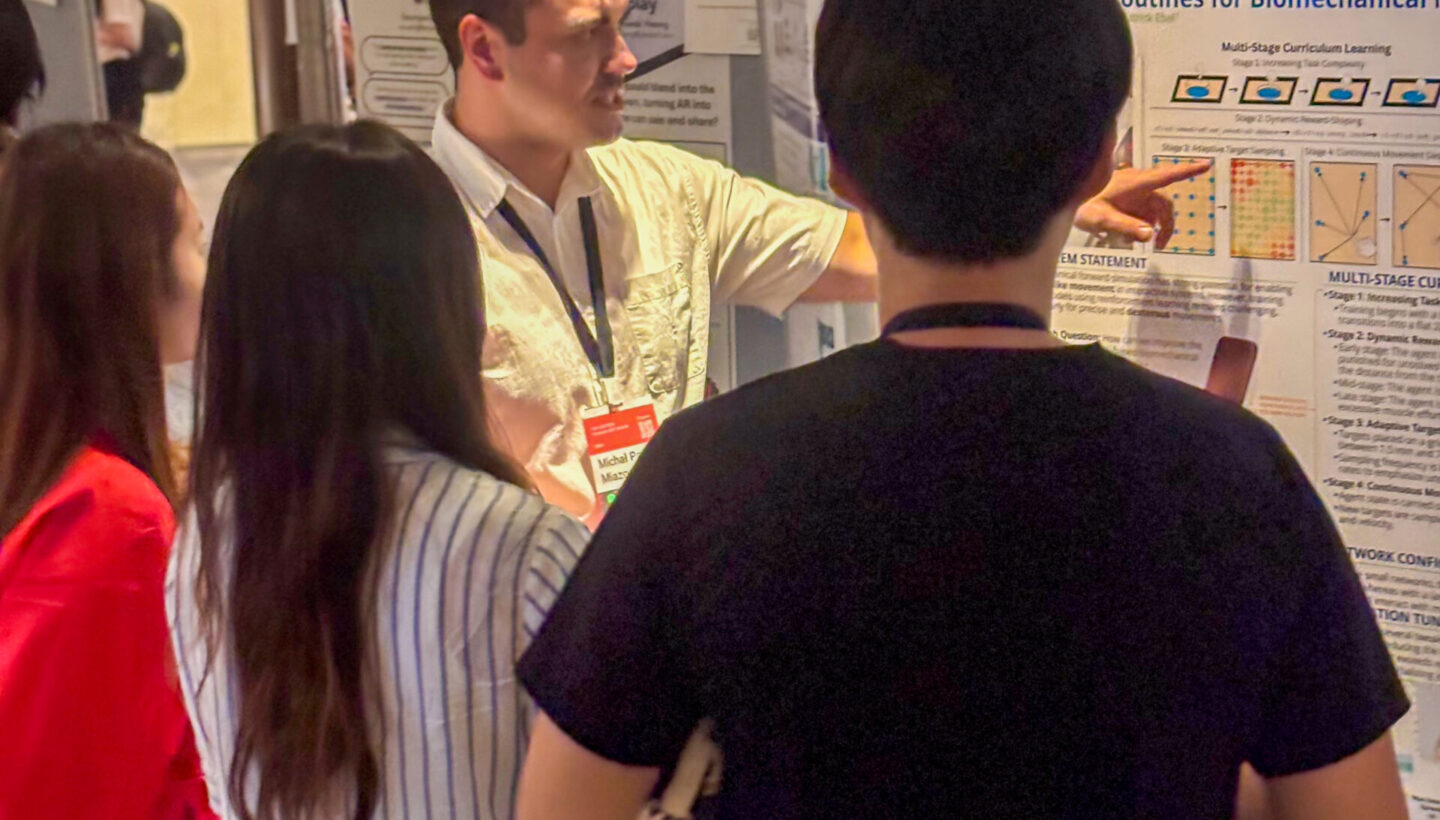
Mind & Motion: Opportunities and Applications of Integrating Biomechanics and Cognitive Models in HCI
Patrick Ebel and Arthur Fleig co-organized a workshop together with international collaborators. The workshop has the title “Mind & Motion: Opportunities and Applications of Integrating Biomechanics and Cognitive Models in HCI” . Together with Miroslav Bachinski, Dr. Florian Fischer, Markus Klar, Prof. Per Ola Kristensson, Prof. Roderick Murray-Smith and Prof. Anitti Oulasvirta they talked about integrating biomechanics and cognitive models in human-computer interaction.
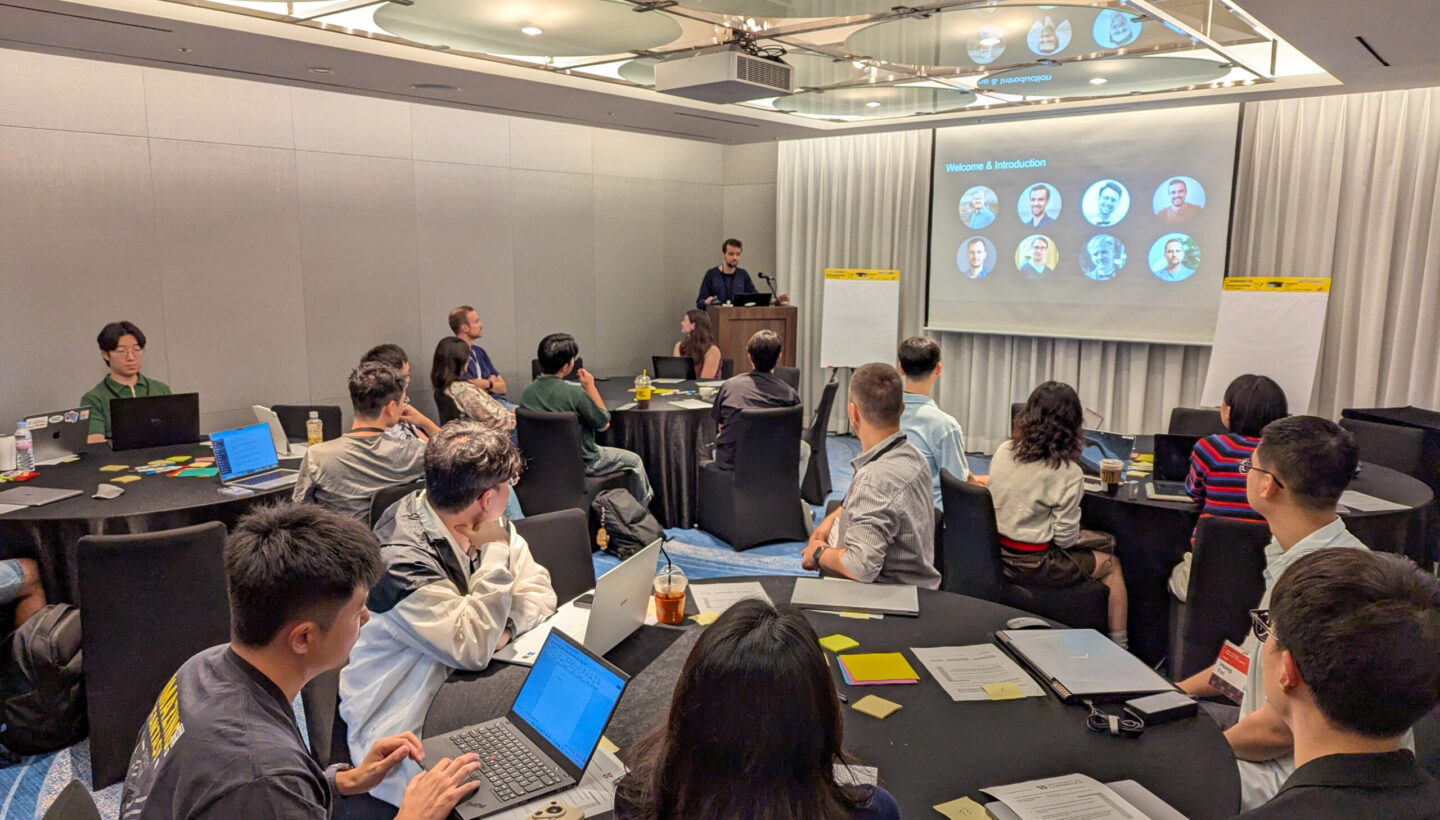
There, they discussed the potential of merging biomechanical and cognitive models. The goal was to create human-like user simulations for interaction design and HCI research. They had two inspiring keynotes by Vittorio Caggiano and Danqing Shi, a hands-on biomechanical RL session. In addition, participants from academia and industry presented many unique and extremly valuable perspectives and ideas.
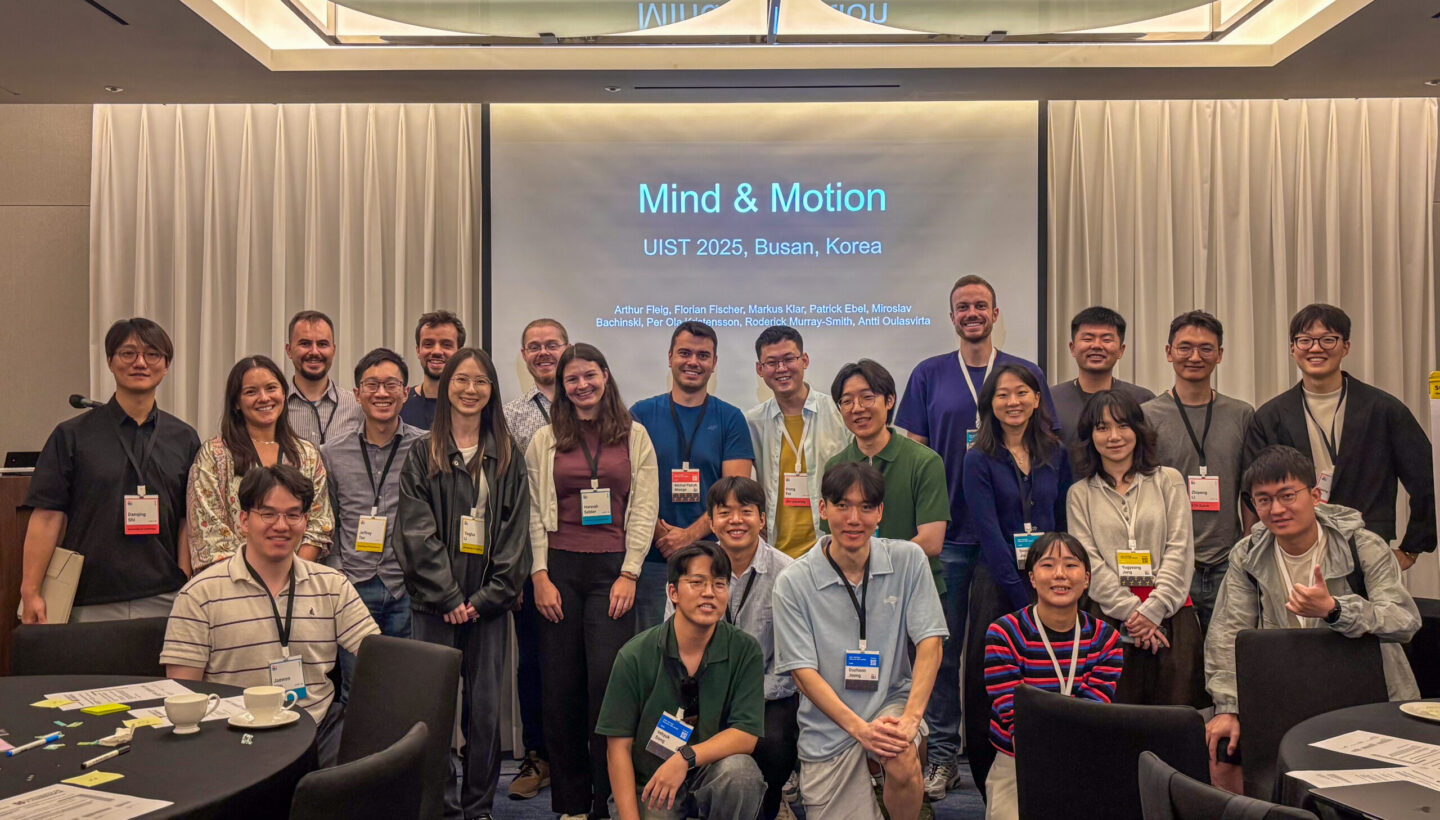
All in all, the trip to South Korea was a great success. Our scientists were able to share their knowledge with others and learned a lot themselves. Thank you all for making this workshop a huge success!
